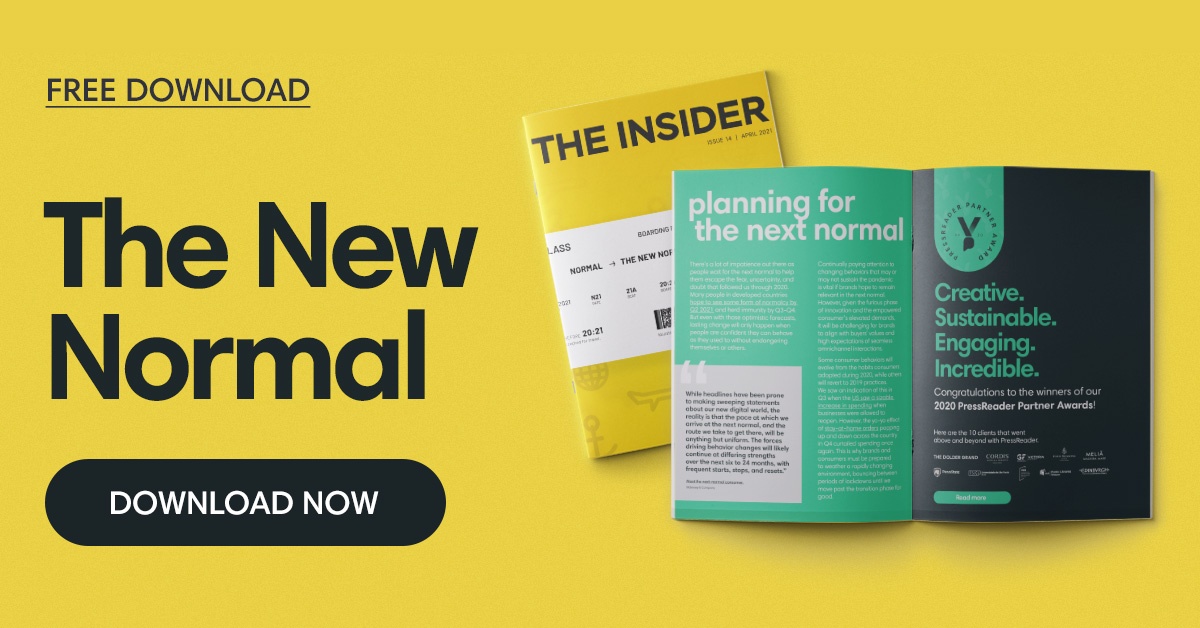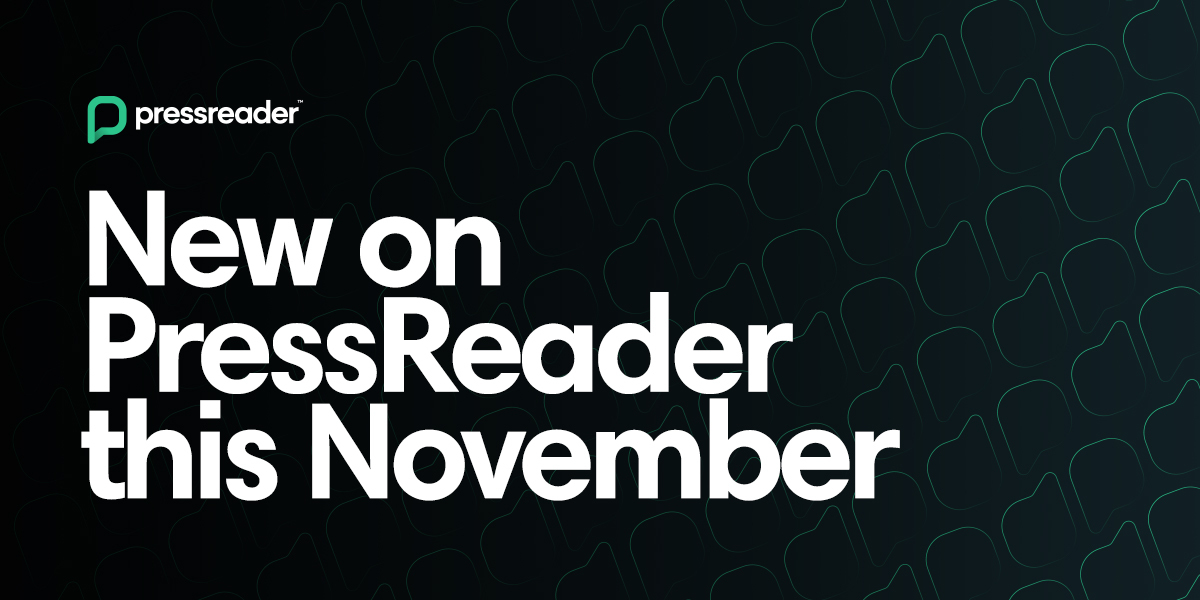Back in 2009, as the Great Recession was winding down, Ian Davis of McKinsey & Company prophetically wrote in The New Normal: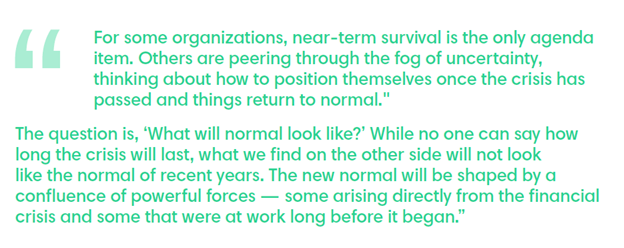
It sounds like he just wrote this yesterday, doesn’t it? The scary part is that although what he said is as applicable today as it was over a decade ago, it doesn’t capture the scope of what COVID-19 has done, and is doing, to businesses, workplaces, and workers.
Corporate priorities
If you were to predict the number one threat to your company’s growth at the beginning of 2020, what would it have been? According to KPMG’s CEO Outlook survey of 1,300 CEOs, the number one threat was climate change. Talent risk was dead last. Six months later, the picture dramatically changed; Talent risk skyrocketed to the very top.
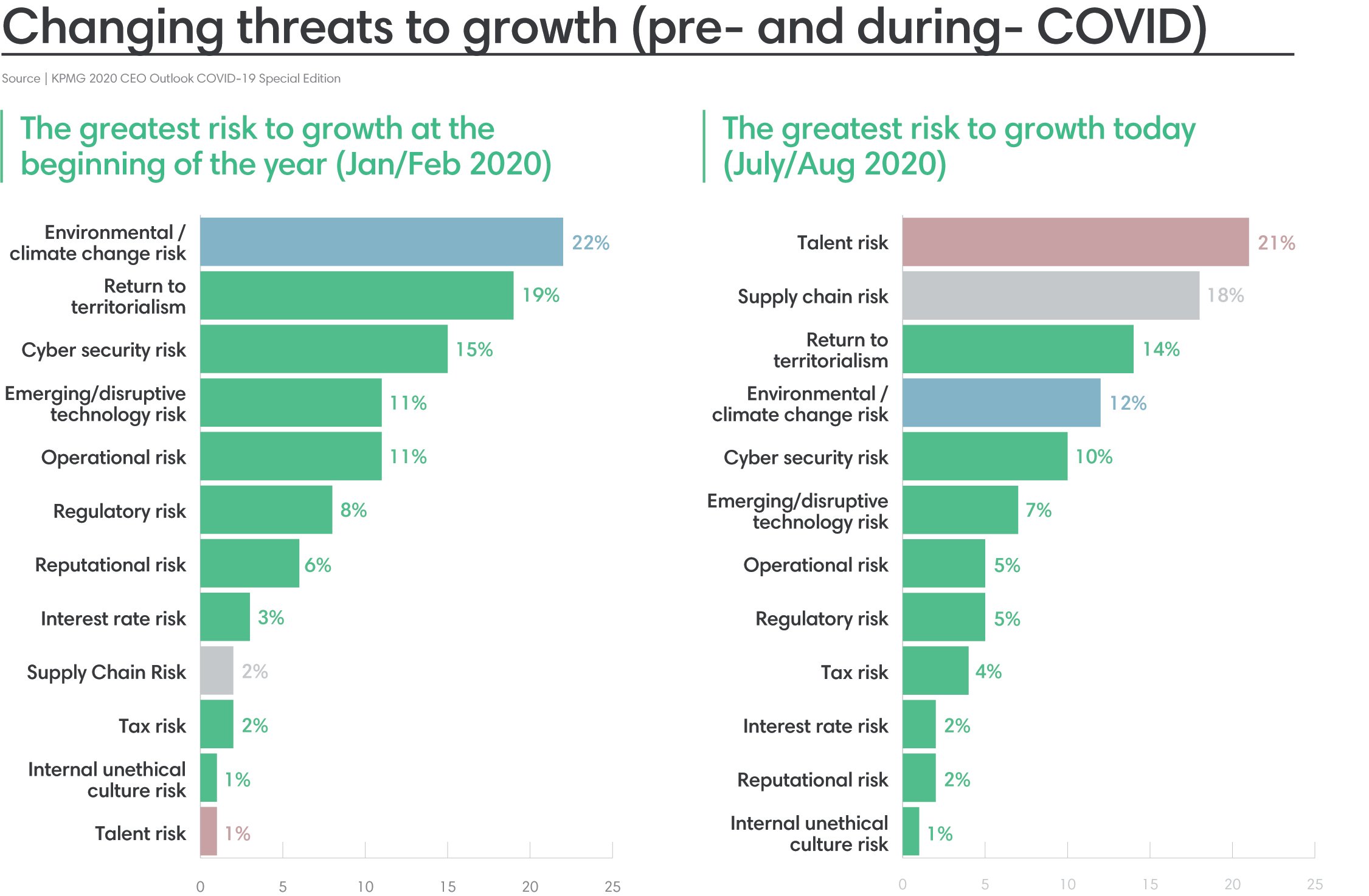
The widening of the talent pool due to the elevated level of remote working has businesses rethinking their office spaces, locations, and recruitment strategies. Meanwhile, having a second wave of the virus in strategic markets has raised concerns regarding employee retention, new talent acquisition, and employee productivity.
Leading in crisis
Being a C-suite executive is a tough job at any time, but it’s particularly daunting during a crisis when nothing is predictable or normal. But it’s also incredibly empowering for those willing to take full accountability for what happens going forward when the only constant is change.
To successfully navigate and excel in the “next normal,” McKinsey & Company suggests that business leaders need to act across five “Rs” — starting when the coronavirus became a global crisis and ending when it is no longer a threat.
Resolve: the need to determine the scale, pace, and depth of action required in public and private sectors to address the urgent needs of society and the economy.
Resilience: the need to balance financial and social sustainability.
Return: the need to reassess entire business systems and plan for contingencies to effectively return to business at pace and scale.
Reimagination: the need to look at our unprecedented new reality as an opportunity to lead business and society into prosperity.
Reform: the need to adopt innovations and experiments that worked during the crisis and restructure regulations and policies as society seeks to avoid, mitigate, and preempt a future black-swan event such as the coronavirus crisis.
Although I can appreciate how every phase is essential to a company’s journey over the next year, I can’t help but gravitate to one I believe can make the most significant impact, not only for the business and stakeholders, but for the employees, partners, customers, and society: Reimagination.
I’m not saying businesses shouldn’t try and fix what’s wrong, be resilient through the crisis, start the process of returning to a new normal when the time is right, and adopt the good that came out of the pandemic. But to not embrace the chance to completely reimagine our businesses’ raison d’être would be an opportunity we can’t afford to lose.
But how does one reimagine a future-ready business when the future is so uncertain?
Start with why
Leadership expert and best-selling author Simon Sinek said at his 2009 TEDx talk, How great leaders inspire action, “There are leaders, and there are those who lead. Leaders hold a position of power or authority, but those who lead inspire us. Whether they’re individuals or organizations, we follow those who lead, not because we have to, but because we want to. We follow those who lead, not for them, but for ourselves.”
According to Sinek, great inspiring leaders and organizations all think, act, and communicate precisely the same way, and it’s the complete opposite to everyone else. He uses what he calls the Golden Circle to clarify his premise. 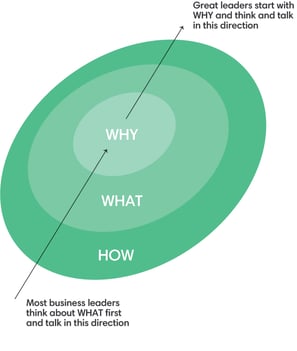
Every business owner or executive knows what they do. Some know how they do it; that’s typically their differentiated value proposition. However, very few know why they do what they do. By the way, making a profit isn’t a why; it’s a result. WHY is about purpose, belief, or cause. It’s what makes people care.
The way most people think, act, and communicate is from the outside in. They go from the most clear (the WHAT) to the least (the WHY). But, inspired leaders and their organizations all think, act, and communicate from the inside out.
Sinek’s premise is that people don’t follow leaders because of what they do; they follow leaders because of why they do it. Like Dr. Martin Luther King Jr., great leaders have a dream, not a plan, and we follow or buy from people who lead because we believe in their vision.
Steve Jobs is the quintessential example of a leader that people flocked to follow. We saw his leadership in 1997 when he announced after returning to Apple to save the company from bankruptcy, “Apple is not about making boxes for people to get their jobs done, although we do that well. Apple is about something more. Its core value is that we believe that people with passion can change the world for the better.”
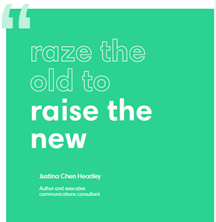 Jobs believed in challenging the status quo and thinking differently; he inspired people to “dream bigger.” He also wasn’t afraid to “raze the old to raise the new” by taking risks many execs wouldn’t even consider. By launching the iPhone in 2007, Apple killed the iPod — a product that accounted for over 28% of Apple’s revenue in 2009 — over US$11.9 billion!
Jobs believed in challenging the status quo and thinking differently; he inspired people to “dream bigger.” He also wasn’t afraid to “raze the old to raise the new” by taking risks many execs wouldn’t even consider. By launching the iPhone in 2007, Apple killed the iPod — a product that accounted for over 28% of Apple’s revenue in 2009 — over US$11.9 billion!
He cannibalized his profitable and popular product by reimagining the phone, MP3 player, camera, Personal Digital Assistant (PDA), and computer—integrating their functionality into a single, leapfrog, device. But not just any device—the most beautiful device the world had ever seen.
Winners and losers in the search for why
If you’re a Starbucks fan, you might appreciate this story. In 1971, three academics launched the brand because they loved coffee and tea (the what). For years, they continued to grow organically and regionally as strictly a coffee and equipment seller.
At the time, their director of marketing, Howard Schultz, had the idea to turn Starbucks into a destination – a café like the ones Schultz had seen when visiting Italy in 1983. The owners balked at his vision, and Shultz eventually left to start his own chain.
In March 1987, when the original owners decided to sell Starbucks, Schultz snatched it up for a mere US$3.8M and expanded Starbucks from 11 stores to more than 30,000 worldwide. As of February 2021, Starbucks’ market cap was over US$125B.
Why was Schultz so successful? It wasn’t because of the taste of their coffee; I can second that. Sorry, not a fan. It was because Schultz wasn’t in the business of coffee; his WHY was to “create a third place between work and home.”
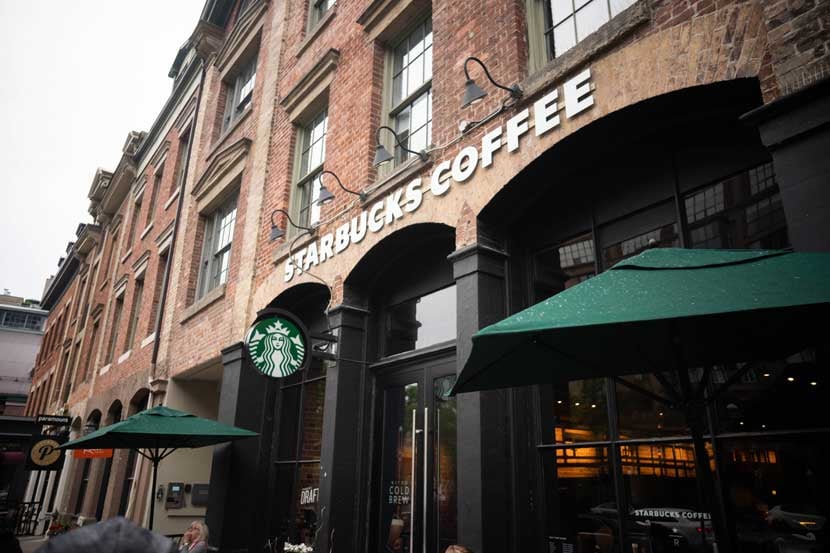
When I read this, it occurred to me that because of COVID, my office at PressReader has become the coffee shop for me.
I traveled extensively before the pandemic hit, so my work routine was already very different, even in normal circumstances. What I’m finding now working both from home and the office every week is that I plan and do things differently. Starbucks saw this shift in behavior early in the pandemic.
In June 2020, it announced the closure of 400 stores in North America and the opening of new to-go-only locations — no café-style dining required. Even before we had a hybrid work from home and work from the office model, Starbucks recognized that it was no longer the third place between work and home. The question is, “After the pandemic is behind us, will Starbucks go back to being a place to disconnect, grab a coffee, and have a social conversation with someone?” What do you think?
What’s your why?
While writing the last issue of The Insider, we were in the eyewall of the coronavirus hurricane, and it was a wild ride. The existential crisis forced us to step back and look at our business with new eyes. We needed to question everything and re-examine what was really important. We knew we were going to take a hit financially, at least in the short term. The question was, would there still be a future for what we stood for in the post-pandemic world?
What we came away with after much soul-searching was a new appreciation for two fundamental truths we’ve always believed:
- Quality journalism must be available to every person in the world, regardless of their willingness or ability to pay for it; and
- Quality journalism deserves compensation.
These two seemingly conflicting statements have been our WHY since we launched the company 21 years ago, and upon which we built a global sponsored-access business model to fund quality journalism.
So when the World Health Organization declared the coronavirus disease a global pandemic, we chose to double down on those truths. We democratized access to content for people and communities in need and paid publishers for their content ourselves until our channel partners could afford to sponsor access to it once again.
Heading into 2021 and feeling an understandable level of fear, uncertainty, doubt, I urge you to take the time to step out of your comfort zone of starting with WHAT and try reimagining your business and yourself by starting with WHY.
Make empathy and wellness part of your why
An October 2020 global study by Ogilvy reported that 73% of 7,000 consumers from 14 countries believe that every brand’s core mission should include a wellness strategy. A year ago, I might have thought “every brand” was a bit too inclusive; since when does a bank include wellness in its mission? But I don’t feel like that today.
Sustainable Development Goal 3: Ensure healthy lives and promote well-being for all at all ages is the responsibility of every person, business, organization, and institution on planet Earth. And if COVID-19 taught us anything, it’s that opting out of our commitment to make the world a better place is not an option.
As a result of the pandemic, the risk for depression among American workers climbed by 102%. For those between the ages of 20 and 29, it almost tripled, soaring by 305%. At this article’s writing, the increase in stress, anxiety, and depression remains significantly higher than pre-COVID, raising new concerns with employers about the prolonged elevated level of mental stress of their employees and contractors.
PressReader has always made wellness part of our commitment to employees, offering a comprehensive benefits package that includes extended health, dental and vision care, subsidized fitness memberships, and professional association and training reimbursements, to name just a handful. In 2020, we added access to private telemedicine and an online pharmacy service as well.
When the pandemic hit, we realized we needed to extend our commitment to wellness to our partners and readers. We launched #PressReaderCares — our commitment to incorporate empathy and wellness into everything thing we do for our publishing and channel partners and readers during COVID-19.
And we are by no means alone. Many brands have demonstrated their commitment to wellness and empathy during COVID.
Some airlines like JetBlue and Alaska put people ahead of profits when they kept their promise to keep the middle seat empty for a significant time period; other airlines revoked theirs.
Hilton Worldwide helped define a new standard of hotel cleanliness and hygiene when it rolled out its CleanStay program in partnership with the Mayo Clinic and RB (the makers of Lysol and Dettol disinfectant sprays). Walmart Canada committed US$3.5B to renovate their stores for the COVID and post-COVID era.
Don’t return to the good ol’ days; reimagine better ones
“As the world of business grows increasingly uncertain and volatile, companies that have purposefully developed capabilities to tackle ambiguity and unpredictability are most likely to thrive.”
Advantage in Adversity: Winning the Next Downturn
BCG Henderson Institute
Making decisions and executing them during heightened uncertainty like we saw in 2020 was challenging and scary, but waiting for clarity came at a much higher cost.
McKinsey’s research discovered that the businesses that move early in a crisis often maintain a lead over competitors for years. Taking action now is the only way to get ahead of the trends already accelerating. Clarity is a luxury we no longer have in a world where political forces, climate change, and escalated technology advances continue to collide.
What now?
2020 may have been the most challenging year in recorded history, but it wasn’t without hope. We witnessed some inspiring acts of bravery and sustainable development initiatives that gave us hope for a better tomorrow if we act with purpose. And hope, as Helen Keller once said, “sees the invisible, feels the intangible, and achieves the impossible.”
Some may say I’m overly optimistic about our future, but I can’t be anything but hopeful. We have so much going for us in terms of talent, teamwork, and trust; how can we fail? The coronavirus was catastrophic, but it will be contained and its threat eliminated, hopefully in 2021. So, we will continue to follow our WHY and practice goodwill because it is good business. Together, we can do this!
Note: This article was originally published in the April 2021 edition of The Insider on PressReader.com




